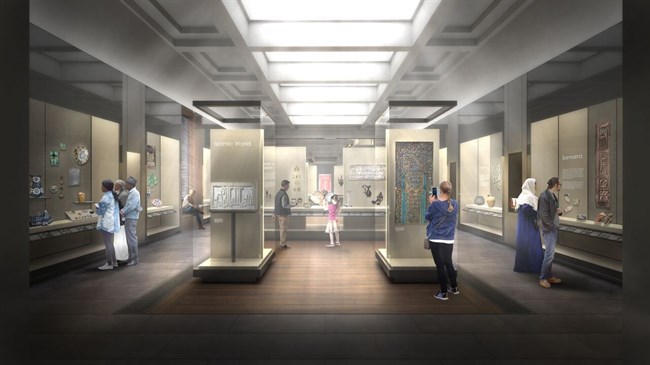A new gallery of Islamic arts at the British Museum broadly explores the cultural impact of Islam on everyday life through art and material objects from the many lands and societies the religion has affected across continents and centuries.
With innovative curatorial direction and displays, the new Albukhary Foundation Gallery of the Islamic World brings together objects from the museum’s collection dating from the seventh century to the present day, and originating from Nigeria to Indonesia, al-fanarmedia.org reported.
“The exhibition aims to stretch the boundaries of what we thought to be Islamic objects,” said Venetia Porter, the lead curator of the gallery.
This is not an exhibition intended to discuss Islam as a religion, but rather as a phenomenon whose ideas and philosophy influenced the aesthetic designs of everyday objects produced in disparate places.
The new exhibition explores how design and aesthetics formed, evolved and adapted as they were carried to different places through the movement of traders and diplomats along the extensive trade routes that crossed areas where Islam was present.
Rather than placing a heavy emphasis on Egyptian, Indian and Persian objects, such as manuscripts and lusterware, the new exhibition highlights items from the periphery of where Islam was or is present today in a harmonious dialogue.
Along with objects like a 20th-century Nigerian chessboard and Turkish shadow puppets, the exhibition also includes items textiles and Turkish bath clogs inlaid with mother-of-pearl dating from the 19th century, and African musical instruments from the 20th century.
The success of the gallery’s redisplays stems not only from this new curatorial approach, but also from the arrangement of objects in airy cases that allow visitors to study objects more intimately than in other museums. In each section, said Porter, ‘gateway objects’ help situate the viewing experience in a time period, which then allows visitors to engage with other items and extrapolate a deeper understanding of the objects they are viewing.
Detailed wall texts that explain the historical origin and sociopolitical context helps to make sense of the objects. Visitors can gain a nuanced understanding of Islamic history and art with the aid of items such as an Iznik-style plate decorated with the image of Mary and Jesus Christ. Such an object helps to rebut two standard ideas about Islamic art: That objects deemed Islamic were made to serve a religiously performative purpose, such as Qur’anic manuscripts for prayer, and that figurative depictions of prophets did not exist.
The British Museum’s collection includes some of the finest examples of ceramics, manuscripts and other objects often associated with Islamic civilization, in addition to items that came from the former Museum of Mankind, an ethnography-focused branch of the museum that showcased objects from minority cultures outside the Western world from 1970 to 1997. After the Museum of Mankind closed, its collection was broken up and sent to other sections at the British Museum, including the Department of the Middle East.
The expanded Islamic collection now includes archeological artifacts, decorative art objects, shadow puppets, textiles and contemporary art.
Two of the contemporary works, by the British artist Idris Khan and the Saudi artist Ahmed Angawi, were commissioned specifically for the new gallery.
Khan’s ’21 Stones’ is an installation of 21 individual paintings based on the ritual ‘stoning of the Jamarat’, in which Hajj pilgrims throw stones at a wall representing the devil. Angawi designed five mangour screens that cover the gallery’s windows and help direct light inside. The screens were inspired by traditional Hijazi woodwork technique and are handmade from walnut wood.
The inclusion of contemporary works in the exhibition illustrates the curators’ aim to highlight the influence of Islam on the creation of art up to the present day.
Source:Irandaily



